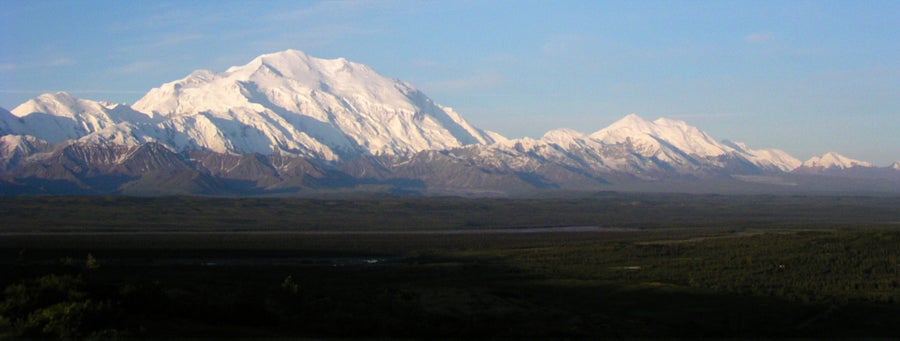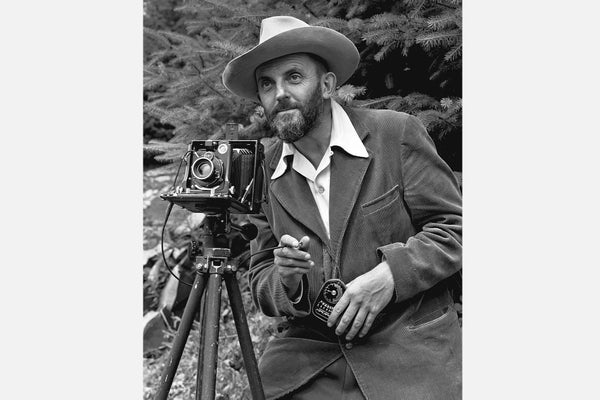Have you ever wanted to walk in the footsteps of the acclaimed photographer Ansel Adams? Thanks to the work of Donald Olson, an astrophysicist at Texas State University, now you can.
Olson has made a name for himself in an esoteric subfield he calls “forensic astronomy,” which uses observations of the heavens and detective-style sleuthing to pinpoint precise locations, dates and times associated with famous works of art. Some of Olson’s greatest hits include his linkage of the blood-red sky in Edvard Munch’s The Scream with the 1883 eruption of Krakatoa, and his determination that Claude Monet’s Impression, Sunrise captured the rising sun as seen from a French harbor at 7:35 A.M. local time on November 13, 1872. For his latest feat, Olson has come up with an exact time and location that Ansel Adams snapped his famous photo of North America’s tallest mountain, Denali, and the nearby Wonder Lake in Denali National Park, just north of Anchorage, Alaska.
Photography scholars are often interested in the chronology of Adams’s work and the minute details of his images, because even though Adams kept meticulous records of his camera exposures and darkroom methods, he notoriously failed to precisely note where and when he captured his images. Such details may not mean much to many of us, but for serious fans, Olson says, “knowing the details of the place, the date and the time when Adams captured a photograph provides the opportunity for an imaginative experience. The science brings the modern reader closer to the moment of creation.”
On supporting science journalism
If you're enjoying this article, consider supporting our award-winning journalism by subscribing. By purchasing a subscription you are helping to ensure the future of impactful stories about the discoveries and ideas shaping our world today.
The dating of “Denali and Wonder Lake” by various sources (including Adams himself) is historically split between 1947 and 1948, with no way to confirm which year is correct. Olson had previously dated two of Adams’s other works, “Autumn Moon” and “Moon and Half Dome,” but “Denali and Wonder Lake” contains no moon or other celestial reference points. So Olson and his student Ava Pope had to find another way to narrow down when the photo was taken.

View of Denali and Wonder Lake as seen by the Wonder Lake webcam, July 15, 2008 at 3:45 a.m., Central Alaska Standard Time. Interpolating between this and the same view from the webcam five minutes earlier, Olson and Pope determined the lighting and shadows most closely matched Adams' image at precisely 3:42 a.m. Credit: US National Park Service
They got their break when they found a passage written by Adams in 1983, describing an evening drive into the park with his son. Just before reaching the Wonder Lake ranger station, Adams jumped out of the car to photograph Denali surrounded by clouds and a waxing gibbous (nearly full) moon recently risen over the horizon. The resulting image became “Moon with Denali.” Adams went on to write that he and his son rose around midnight to take in the changing light of the predawn hours. As they watched the first rays of sunlight hit Denali’s lofty peak, Adams scrambled to a lookout point over Wonder Lake and set up his tripod. In the fleeting moments before the sunlight struck the valley floor and looming clouds rolled in, he captured “Denali and Wonder Lake.” Olson and Pope realized “Moon with Denali” was the key to their question, because it contained the reference point they so badly needed—the moon.
Olson and Pope consulted topographical maps of the park to identify the coordinates of several geographical features in the foreground, and estimated their relative distances from the road. The features ranged from 12 to 28 miles away, which meant Olson and Pope could take advantage of a phenomenon called parallax—the shift of nearby objects with respect to more distant background objects.
Using their custom-made software to calculate the viewing angle for any point along the road where Adams could have set up his tripod, Olson and Pope found a match with a spot eight miles from the ranger station where Adams and his son stayed the night. Olson and Pope then extrapolated the celestial coordinates of the moon, and ran them through a digital planetarium program. The only summer there was a waxing gibbous moon in such a position turned out to be 1948: July 14, at 8:28 P.M. to be exact.
Armed with this data, Olson and Pope turned back to “Denali and Wonder Lake.” They knew it was taken only a few hours later, on the morning of July 15. With the same viewing-angle software, they were again able to zero in on where Adams likely stood. But with no moon this time, they turned to the sun to determine the hour. Straight calculations of the sun’s path in the sky on the morning of July 15 that year pointed to a window of 3:40 to 3:50 A.M., when the length of the shadows would have been similar to those captured in the photograph. To pinpoint the exact moment, Olson and Pope turned to Jon Paynter, a ranger and geographer at Denali National Park.
Paynter informed them of an existing Webcam that had both the mountain and the lake in its field of view. With his help they combed through the Webcam archives, looking for a year in which the skies on July 15 were clear enough to see the shadows in the foreground. Examining the high-resolution Webcam photos from July 15, 2008, and correcting for the motion of the sun over the intervening 60 years as well—as the offset of the Webcam’s position to Adams’ original perch—Olson and Pope identified 3:42 A.M. on July 15, 1948, as the exact time Adams photographed “Denali and Wonder Lake.”
